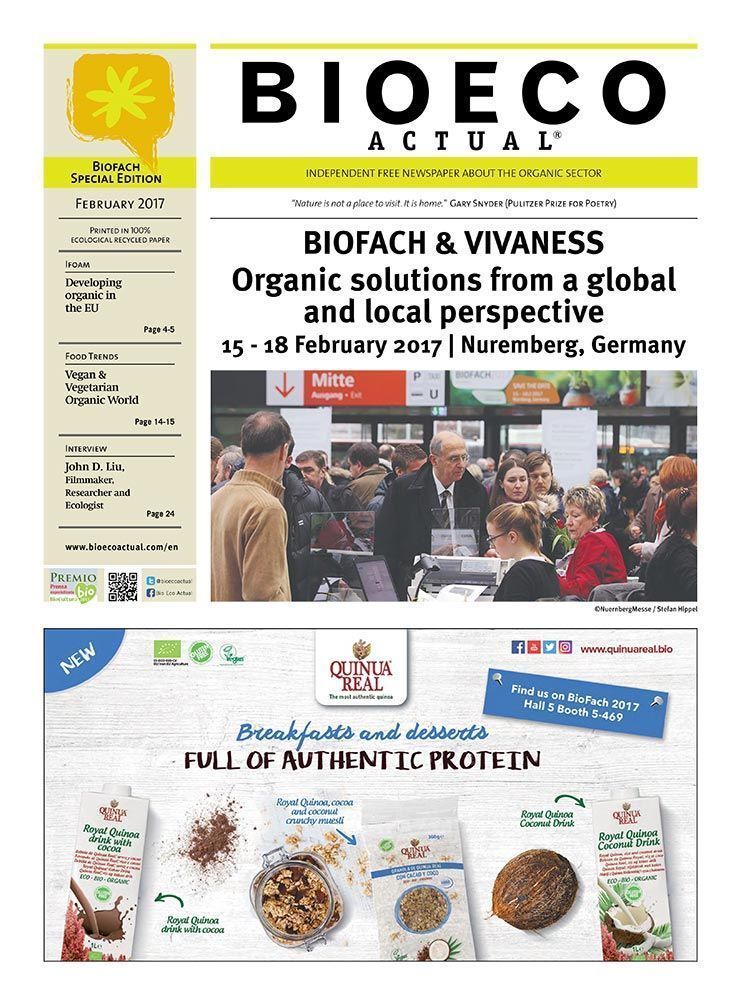Conscious consumerism and interest in natural and organic increase year-on-year. New products, new markets and new channels for cosmetic products to reach a growing consumer base is reflected in the interest from indie brands, to established pioneers, to conventional companies looking to enter the sector with both certified and non-certified brands.

Despite an increasingly diverse and competitive landscape, still affected by the lack of better regulation to harmonise the control of misleading natural and organic claims across the Union, the natural and organic sector still outperforms the cosmetic industry as a whole where known drivers for consumers range from hazard avoidance to environmental consciousness; from animal welfare and veganism, to being simply part of a holistic lifestyle.
Nevertheless, for consumers to continue to have access to a wide and diverse range of authentic product categories from decorative cosmetics to hand creams and shampoos, we must consider that ensuring appropriate ingredient regulation, to guarantee a wide palette of non-GMO natural and organic raw materials without the need to arbitrarily substituent for (semi-)synthetic substances, goes hand-in-hand to assure the quality finished products consumers expect.
Looking into 2020 a ‘green new deal’ for Europe can align with the sector’s values
A core pillar of NATRUE is advocacy: to speak up for the sector on legislation that may impact the sector. As a representative with a seat at the EU Commission’s Working Group on cosmetic products, NATRUE sees the following as hot ingredient topics for 2020:
- Endocrine-disrupting chemical substances (EDCs): EDC regulation can impact any substance or mixture, natural or not. In 2019, following two publications on this topic in 2018, the EU Commission ran an open call for data on ingredients with potential ED properties used in cosmetic products related to 14 priority substances that would be risk assessed by the SCCS. Natural substances on the list include Benzyl salicylate, Genistein and Daidzein, as found in soybean extracts, and Kojic acid. Hand-in-hand the Commission have developed a Roadmap Fitness Check to assess whether relevant EU legislation on endocrine disruptors delivers its overall objective to protect human health and the environment by minimising exposure to these substances. The outcome of the Fitness Check is expected in 2020, which will feed into a wider debate on how the results will be implemented into actions for all cosmetics depending on the proposed criteria. There is a significant political, NGO and consumer pressure, and so it will undoubtedly be a top issue for the new Commission.
- Fragrance allergens – new labelling: Following the 2012 Opinion of the Scientific Committee on Consumer Safety (SCCS), there was a recommendation for a large number of additional fragrance allergens for labelling totalling up to 87 from the current 26 allergens to be listed by law. A policy Roadmap was proposed in 2018 that included various options from no change, to on-pack or off-pack labelling of the additional allergens. In 2019 selected stakeholders were interviewed and a timetable for a public consultation prepared prior to further analysis of the proposals’ impact in 2020. The impact of further labelling is not insignificant for natural and organic cosmetics, and requires consideration for aspects such as transparency and proportionality.
- Microplastics: In 2019 European Chemicals Agency (ECHA) submitted to the European Commission its restriction proposal for microplastic particles that are intentionally added to mixtures used by consumers or professionals. A public consultation on ECHA’s restriction dossier was concluded in Q3 of 2019. The registry of restriction excludes polymers that occur in nature as well as soluble polymers not in the form of a particle. Synthesised polymers derived from natural origin would be in scope if in a solid particle form unless these would fulfil interim biodegradability criteria. Liquid polymers/polymers in solution are not treated as particles by definition, and do not fall under the scope of the restriction. A post-consultation regulatory proposal is expected in 2020.
With the Commission and Parliament in-place NATRUE welcomes agendas that focus on integral aspects of the natural and organic sector such as sustainability and protection of biodiversity. Policy in these areas is no longer a choice but an inevitability.
Looking into 2020 a ‘green new deal’ for Europe can align with the sector’s values. Proposals should encourage further development of the circular economy and plastic strategies to reduce waste, foster green innovation and lower environmental impact; enhance the bioeconomy to reduce fossil fuel dependence; secure organic and non-GMO supply chains for producers; better control of misleading natural and organic product claims.
Conscious consumerism and interest in natural and organic increase year-on-year
As the non-profit International Natural and Organic Cosmetics Association, NATRUE has a unique, and privileged, position permitting direct participation and contribution to legislative change. NATRUE’s involvement is crucial to providing sectoral perspective, clarity and expertise to regulators and stakeholders at European and international regulatory decision-making level.
NATRUE stands for a high-quality benchmark that avoids arbitrary exceptions and maximises content to avoid diluting the integrity of natural and organic product claims to keep greenwashing off the shelves. Consumers can be assured that in seeing the NATRUE seal they can enjoy natural and organic cosmetics that really deserve their name. Into 2020 the NATRUE Label continues to expand; exceeding 6300 products covering more than 250 brands in 30 countries worldwide.

Author: Mark Smith, Director General at NATRUE | www.natrue.org
Subscribe at our Newsletter and be up to date with the latest news in the European Organic Sector
Bio Eco Actual, International Organic Newspaper
Read Bio Eco Actual










































